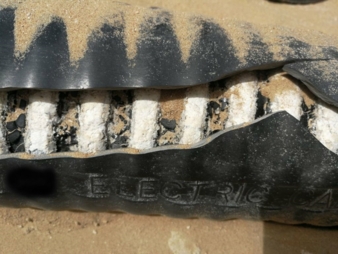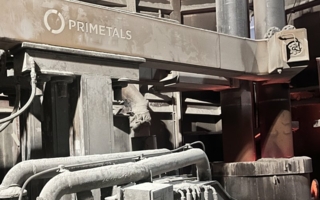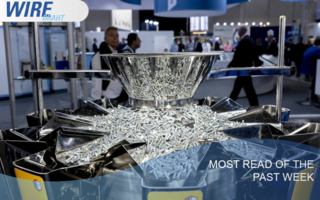31/10/2019
Lead-sheathed cables and the environment
Do lead-sheathed high-voltage (HV) power cables cause environmental degradation and health problems? The answer is no! This is the response of the Indian Ministry of Power to the claim of the Confederation of Indian Industry CII to ban Indian power and transmission utilities from using high-voltage power cables containing lead and to adopt “green” alternatives.
The authorities have released a statement that lead cannot and will not be banned from HV cable since there is no threat and using lead is the best solution. HFSAB, the internationally leading manufacturer of horizontal lead extruders, can assure that the application of lead-sheathed cables in general is associated with more than 100 years of experience, and the environmental safety is proven and documented.
A metallic radial moisture barrier (sheath) is necessary
Many cable types including HV, EHV (extra-high-voltage) and submarine cables need a protection against penetrating moisture. A continuously formed metal barrier around the exterior of the cable is the only way to permanently prevent ingress of moisture or moisture vapour, in all its forms, i.e. salts, such as sulphides, pollutants, hydrocarbons, gasses. The metal must also be able to maintain its physical characteristics for the expected life of the cable, should constitute part of the cable providing fault current path and provide a mechanical protection for the cable against insects, vermins, micro organisms and other limited mechanical damage. Last but not least, the metal barrier must allow for flexibility of the cable, both for installation and service operation such as thermal expansion. There are several types of sheath construction, among them continuously extruded lead. Lead is the most common sheath material as it provides a good balance of all the already mentioned requirements.
The characteristics of lead
Lead is very resistant against corrosion, micro-organisms, gasses, acids, and hydrocarbons. Lead is 95 % recyclable [1] and used in every day life from vehicle battery, power back up for mobile phone masts to power storage from solar and wind farms and in the hospitals within the X-ray and scanning departments.
Lead sheathing of HV and EHV cables, submarine cables, ESP pump cables and cables used in the petro¬chemical industry is easily and safely produced in a modern lead extruder; the sheath behaves like a homogenous and ductile metal tube allowing good cable flexibility. There is no need to apply lead thickly because “creep” grain growth can be controlled by production techniques.
Compared with other moisture barrier materials, lead is heavy, and compared with aluminium, lead is a relatively expensive material.
But cost considerations regarding cables should include not only the material costs, but the total life costs of an installed cable. It should also be noted that aluminium can corrode. An analysis of the rate of corrosion failure for 1985 – 2007 has revealed that the failure rate is more than 6.3 times larger for extruded aluminium-sheathed cable than for lead-sheathed cables [2].So cable-sheaths made from lead, last more than 6 times longer than cable-sheaths made from aluminium.
Environmental considerations
Lead is a toxic material. If used correctly and in specific applications, however, it does not pollute the environment. Moreover, the polyethylene jacket outside the cable precludes direct contact between the lead sheath and the surrounding environment. Prior to 1960, most PILC (paper insulated, lead covered) cables in the USA were installed with a bare lead sheath, and unsheathed cables were common until the 1970s. Corrosion of the lead sheath is common but usually not severe, due to formation of passivating films on the surface of the lead. If lead were to be released, transportation in soil would be quite limited because of sorption and precipitation reactions that cause lead to be of low mobility in soils. In addition, exposures to the general population would be limited due to the fact that any lead released from PILC would be trapped at depth in the soil column, in proximity to the PILC. Thus, potential risks to human health and the environment are considered to be extremely low. A report published by the Electric Power Research Institute EPRI, proves that even bared lead sheathed cables direct buried in the ground are of no consequence to environment or the population! [3]. Today all lead sheathed cables are covered in a plastic outer sheath. Therefore, any contamination into the soil etc. is very unlikely. The conclusion is: if lead is used correctly and in specific applications, as a solid material, it does not pollute the environment.
Literature
[1] International Lead Association, www.ila-lead.org/home
[2] V.M. Barinov: Corrosion protection of 6-10-35-110-220-kV Cable Lines in St. Petersburg. in: Elektrotechnika 2009, N. 3, pp 64–67.
[3] Naomi Goodman, EPRI Project Manager: Environmental Impacts of Lead from Paper-Insulated Lead-Covered Cable. 1009513, Technical Update, April 2004.
HFSAB
HFSAB, formerly known as H. Folke Sandelin AB, was founded in 1958 and is nowadays a world leader in the production of horizontal lead extrusion systems for subsea cables, underground cables, high-voltage cables and cables for the oil and gas industry as well as cable stripping, repair and recovery equipment. HFSAB is a company of the NIEHOFF Group but run as an independent brand.
The Niehoff Group
Maschinenfabrik Niehoff develops and builds with an experience of more than 60 years machinery needed for the production and the downstream processing of non-ferrous wires into automotive, power, data and special cables. In addition, the portfolio contains technical assistance by professional specialists who speak the customers’ languages. The reliable supply with original Niehoff wear parts and spare parts, machinery inspection, refurbishment and maintenance measures as well as machine operator and maintenance training courses complete the range of services. The Niehoff Group offers custom-tailored solutions from development and planning to turnkey projects of complete cable factories. The Group with over 850 employees worldwide is comprised of its headquarters, six manufacturing subsidiaries (in Brazil, the US, the Czech Republic, India, China, and Sweden) as well as sales and service centers in Japan, Singapore and Russia.
H. Folke Sandelin AB (HFSAB)
Dynamovaegen 7, Box 4086
91 04 Motala/Sweden
Tel.: +46 141 203630
hfsab3@hfsab.com
Maschinenfabrik Niehoff GmbH+Co. KG
Walter-Niehoff-Strasse 2, 91126 Schwabach/Germany
Tel.: +49 9122 977-0
info@niehoff.de




